How to Make Disease Disappear with Dr. Rangan Chatterjee
Sometimes the key to overcoming symptoms is not a new diet or a fancy test. Sometimes the solution is addressing a fundamental pillar of health. Dr. Rangan Chatterjee has done a wonderful job in laying out simple and highly accessible steps to ensure you have these pillars in place.
Four Pillars
- Relax
- Screen-free sabbath
- It doesn’t have to be a huge commitment; try a few minutes, then a few hours, then the whole day
- Take 15 min per day just for you
- Daily practice of stillness
- Could be meditation or simply just being still
- It doesn’t have to be a huge commitment try a few minutes
- Eating one meal per day around a table without a device reduces stress and brings families/friends together
- Stress really keeps people from feeling better
- Relaxation is one of the hardest pillars of self-care
- Screen-free sabbath
- Eat
- Time restricted eating can help improve your health in many ways
- It may not be for everyone but most see a benefit
- Food is not the entry point for everyone
- Food/diet is often over-emphasized
- More in the book
- Time restricted eating can help improve your health in many ways
- Move
- 5 Minute Kitchen Workout (see book)
- You don’t even have to join a gym or dress up in special clothes to move
- More in the book
- Sleep
- We need more of it and better quality
- More in the book
Where To Learn More
- TV Show in the UK “Doctor in the house”
- Book “The Four Pillar Plan” or tilted differently in US and Canada – “How to Make Disease Disappear” Amazon link affiliate link?
- Website: https://drchatterjee.com
In This Episode
Episode Intro … 00:00:40
The Four Pillars … 00:06:12
The Four Pillars with Children: A Case Study … 00:11:41
The Impact of Stress on Health … 00:22:04
Social Connection & Eating Mindfully … 00:31:04
Time Restricted Eating … 00:39:24
5 Minute Kitchen Workout … 00:41:25
Episode Wrap Up … 00:45:54
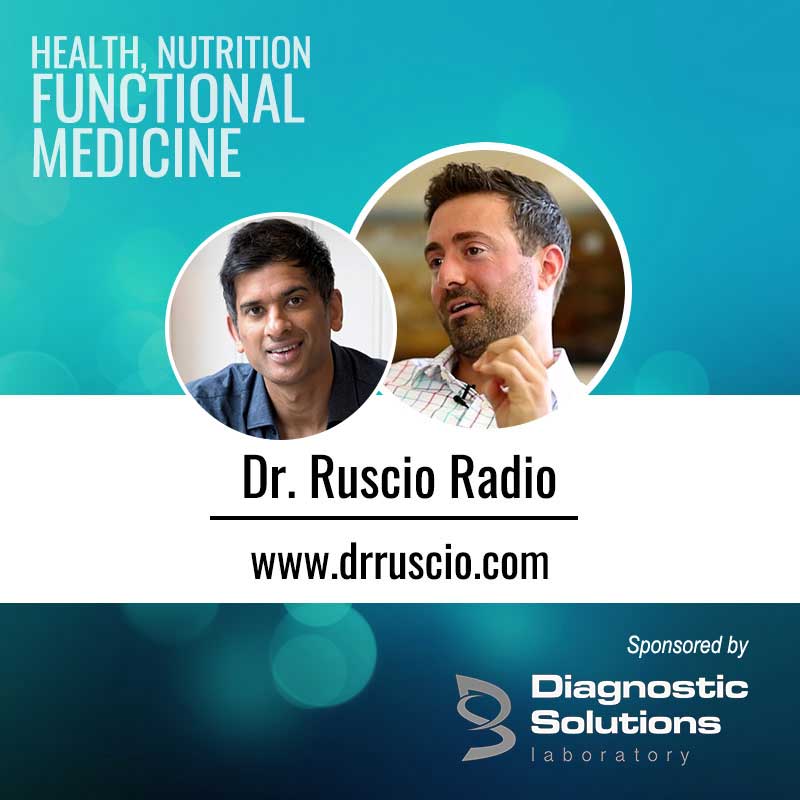
Download this Episode (right click link and ‘Save As’)
Episode Intro
Dr. Michael Ruscio, DC: Welcome to Dr. Ruscio Radio. This is Dr. Ruscio. Today I am here with Dr. Rangan Chatterjee. And we’re going to be talking about his book and his approach, which I think is very much in alignment with the approach that we’ve discussed in the podcast many times before, which is making sure that you really fully address the fundamental pillars of health. And he has one book that goes under 2 titles talking about this, How to Make Disease Disappear and The 4-Pillar Plan. Depending on where you’re shopping, you’ll get a different title.
And, Rangan, welcome to the show, and thanks for being here!
Dr. Rangan Chatterjee: Michael, thank you for inviting me on. It’s a real pleasure for me. Thanks.
DrMR: Yeah, same here. I’ve been seeing you making the rounds, trying to spread the word of functional medicine into some of the regions where it maybe hasn’t had the attention that we would hope it would. And it’s just great to see you carrying that light out there.
And I really like your approach. There was 1 thing—and this is kind of near and dear to my heart—you call it the Screen-Free Sabbath in your book. And I’ve recently been tracking myself. There’s an app called Space that you can download on your phone. And I’ve actually found this to be pretty insightful because it tracks how long you spend on your phone and how many times you unlock your phone. And you’d be surprised at how many people are probably unlocking their phone 150 times a day or even north of that.
So there’s a lot of great little bits and bites in your book. And, I guess, before we jump into that, can you tell people just briefly about your background and then why you wrote the book?
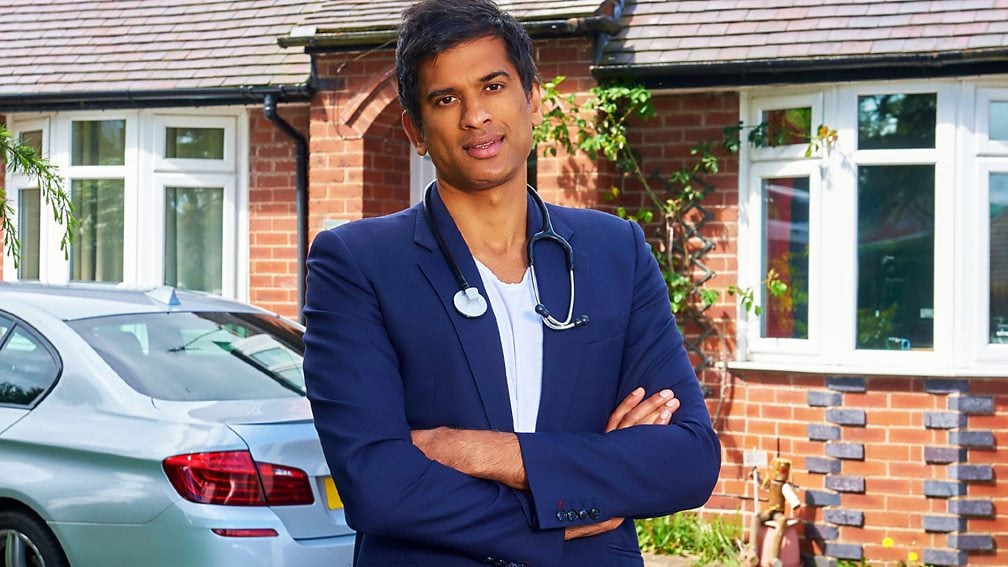
DrRC: Yeah, sure, Michael. So I’m a medical doctor and have been seeing patients now for about 18 years, nearly 20 years of experience of seeing patients. And I’ve been through quite an evolution in my career. I started off training as a hospital specialist. I did all my internal medicine exams in the UK and was doing nephrology, so kidney medicine.
And I was just getting a little bit frustrated. I’ve always had this sense that medicine was getting a little bit super specialized. For me, personally, I felt I didn’t just want to see kidney problems for the rest of my career. I sort of wanted to see everything. So I took what is probably a rather unusual step in the UK of moving from being a specialist to general practice, so being a GP. I did my exams, moved over.
And really I wanted to see everything. I wanted to see how different illness present in the same person, how the whole body is connected. And that really led me on a journey of maybe 5, 6 years ago, I was sitting there at the end of my clinic day, and I looked at my clinic list. And I’d probably been through about maybe 40 patients throughout the day, including phone calls. And I thought, how many of these people have I really, truly helped honestly?
I was trying to be as honest as I could. And I thought, I’ve only really helped 20% of the people that I’ve interacted with today. The other 80%, I feel, sure, I’ve done something for them. I had a conversation. I may have ordered a test. I may have given them a prescription. But 80% I didn’t feel like I really got to the root cause of what was going on and really had a handle on how I could make that person better long term.
And that was really frustrating because as a trained medical doctor, I thought I was going to be trained into how to get people better, like truly better. And for me, it just wasn’t happening. And that really led me on a journey around the world to basically learn more, to understand, “There must be another way.”
I would go to America with a lot of frequency. I’d be studying there, going to lots of conferences. I’d be learning about the microbiome, which I found incredible, particularly its relationship with the immune system because it was maybe 14 years ago—no, a bit longer than that, actually. In 1998, I did a BSC honors degree in immunology. So alongside my medical school training, I also did a degree in immunology. But I never, ever thought about it since my degree. It wasn’t relevant to my clinical practice.
But over the last few years, as I’ve been studying, learning new things, I’ve been teaching doctors, teaching medical students here in the UK, and using immunology and my
understanding of the immune system more and more with each patient. So I’ve really evolved the way I practice medicine, which really came from a frustration of not getting patients as well as I wanted to get them, and also this really deep sense that often my protocols were telling me to use a pharmaceutical medication that ultimately was just suppressing a symptom.
And so that frustration led to me really trying to find a way of doing new medicine. And we can give medicine different labels, whether it’s lifestyle medicine, functional medicine, integrative medicine. There are all these different terms out there. But essentially for me, this is simply good medicine. How do you get to the root cause of your patients’ problems? And how do you try and get them better in as harmless a way as possible?
The Four Pillars
DrMR: Yep. I think that’s very well said, and I agree with you that we shouldn’t get overly wrapped up on the labels and just focus on the outcomes. And I’m assuming as you
were pondering these questions, you started to see that you could consolidate the foundational interventions into these 4 pillars, which you talk about in your book, which are Relax, Eat, Move, and Sleep. And I think that’s a great starting point.
And, again, for our audience, sometimes one of these pillars not being in place can thwart response to a much more exotic looking test or treatment. So it really is important not to gloss over these fundamentals. In fact, just today on the podcast, today being September 17th when we’re recording this, we talked with Randy, who actually improved immensely from coming off of the ketogenic diet. The ketogenic diet seemed to help him for the short term, and then he was just debilitated by fatigue and other symptoms because he was just way too low carb for what his body needed. And just one simple change was all that was needed. And so, again, these foundational pillars are foundational for a reason.
So can you tell us a little bit more about these pillars? And I guess maybe we can even go through them 1 by 1. And I love the Relax one, and I love the screen-free Sabbath. I think that’s a really nice way of terming it. But tell us a little bit more, I guess, about the relax pillar, what you feel is relevant there.
DrRC: Sure. And could we step back just a second? I think you’ve hit a really important point there, which is these are foundational pillars. But a lot of people take them for granted.
And over the last few years, I’ve had a TV documentary series out in the UK on BBC television, a primetime show where I go into families’ houses who have been struggling with health problems for years and years and have been under GPs and specialists, yet they’re still struggling. So I go into their houses for about 4 to 6 weeks. The show’s being shown all around the world. It’s called Doctor in the House.
And I really got to see a whole wide variety of different problems, whether it was type II diabetes, which I helped a lady put into remission and effectively reverse in about 30 days back in the first season. Whether it was helping people lose weight, cure insomnia, reduce something called cluster headaches from 90 a week to under 5 a week, reduce panic attacks by 70%, get rid of fibromyalgia pains within 6 weeks that had been there for ten years previous to that.
And it was interesting. I went through as a real evolution in my ability as a clinician because in clinic, even for these longer clinic appointments that we might have, we may have one hour with a patient. We may have 90 minutes. We may have 45 minutes. But I got 4 to 6 weeks with these families where I would actually go and live alongside them. So I would actually pick up on all the other things that are often not said in our clinic, in our consultation room.
And, yes, I used some fancy tests. And, yes, I used some supplements for some of the patients. But I evaluated what I had done. And I can tell you this: no matter what the problem was, whether it was migraines, whether it was panic attacks, whether it was cluster headaches or type II diabetes, I would drill down on these 4 pillars with each and every single one.
And it really taught me that no matter what the problem is, we’re always looking for that flash cure or that flash supplement that we can take that’s going to be the magic pill. But we really underestimate—and I include us clinicians in this—many of us underestimate the value of getting the 4 pillars correct. Relaxation, food, movement, and finally sleep.
And the reason I started the book with the relaxation pillar, I did it on purpose because I feel that it’s oddly one of the most undervalued pillars of health that many of us just simply aren’t thinking about because we’re so darned into, “What food should we be eating? We need to work out and get to the gym and be active.” Well, I find relaxation but also sleep often get very much undervalued. But I think the relaxation problem is getting worse as we get more and more hooked onto our devices and our screens.

You mentioned the screen-free Sabbath that I recommend. And I think the important thing is, first of all say that why I think this book and this approach has been so successful in the few months that it’s been out is because I’ve really taken the pressure off people. In each of the pillars, there are 5 possible suggestions. So each chapter is a suggestion. So there’s really a nice symmetry in the book.
And say, “Guys, look, you don’t have to do them all. You choose.” Normally my patients need to do about 2 or 3 in each one. For many of us, doing all twenty is going to be frankly impossible. I certainly can’t manage all twenty, and I’m pretty proactive on my nutrition and my lifestyle.
So if people don’t like one of the suggestions, then fine; don’t do it. Choose one that you do like because behavior change is hard. So you’re only really going to engage in behavior change when you are really bought in. Don’t make it harder than you need to.
Using the Four Pillars with Children: A Case Study
And so I start on the relaxation pillar, which is all about stress, really, with the story of a patient that I saw a few years ago. This wasn’t even in my private practice where I see patients for an hour. This is in my standard national health service general practice appointment, which is 10 minutes. And this 16-year-old boy called Devon came in. It was a Monday afternoon, Michael. I was running a little bit late. I had 3 patients waiting outside.
And this boy came in with his mother. And essentially, he had tried to harm himself on that Saturday. So there was a letter there from the ER doctor saying, “Devon tried to harm himself. We assessed him in the ER. We felt that he was safe to discharge, but could you please review him and consider starting him on an SSRI,” which is a type of pharmaceutical anti-depressant drug.
And I remember speaking to him and his mother and just feeling, “Something doesn’t feel right here. I can’t just prescribe Prozac for him. I need to understand what was going on.” I can’t have known that family. They seemed as though they had their things together. They were pretty well balanced. So I was so confused as to why this 16-year-old lad had ended up in the ER having tried to harm himself.
And so I won’t get into the whole story. But basically at the end of our consultation, I was a little bit worried about how much he used social media. And I said to him, “Devon, I’m concerned with how much you use social media. And I think this may be one of the contributing factors to your mental health problems. Would you be interested in me helping you wean down your usage?”
And he was like, “Well, doc, do you think this is really going to help?” I said, “I don’t think it’s the whole thing. But I think it’s a really good starting point.” And he was up for it. He was engaged with me. I managed to really connect with him. So for the next week, all I asked him to do was for 1 hour before bed, I said, “Devon, switch off your phone completely, and the internet, for one hour before bed each night. And I’ll review you in 7 days.”
Now, just to be clear for any of you listeners, you might be going, “Well, was that all you did?” That’s all I did on that first consultation. I had obviously checked that he wasn’t at high suicide risk. I was doing my duty as a doctor. But I didn’t feel a pharmaceutical approach was the right way to go.
So he comes up 7 days later. And I said, “Devon, how was it?” He said, “Hey, doc, I still don’t feel great. But I’m feeling a little bit better. I’m sleeping better. I’ve got more energy, and my moods are less up and down throughout the day. So something’s shifting.” I said, “Okay, well, why don’t we try and do that for 1 hour in the morning, as well, when you wake up?” So he went away. So all he’s doing so far is 1 hour in the morning and 1 hour before bed where he doesn’t go on the internet, he doesn’t go on social media or his phone. And bit by bit, he’s starting to improve. He’s still not great. But he started to improve.
And then about 6 weeks in, we’ve got him up to about 2 hours in the morning and 2 hours before bed where he is not on his device. And he’s feeling better and better. And then I said to him, “Hey, Devon, what are you eating?” I think I’d read some trial at the time about how our diet can profoundly impact our mental health. And I thought, well, I wonder what Devon’s eating.

And it was the typical teenage diet of lots of sugary, processed junk food, lots of sweet things throughout the day. He was certainly on a blood sugar roller coaster throughout the whole day. And I said, “Hey, Devon, I think the foods that you’re eating my be contributing a little bit, as well.” Again, he was in shock. He said, “Really?! What’s the food I eat got to do with my mental health?”
And I explained about blood sugar highs and lows. And I said, “When you’re blood sugar’s dropping halfway through the morning, if it drops too fast, your stress response hormones like adrenaline and cortisol can go elevated. And that will be a stress on the body. And that will affect your mood hormones.” And he said, “Really?” “Yes.”
Well, I drew him this picture, this diagram, that he really understood. I said, “If we can swap out a few of these sweet snacks and go with a lot more nuts, a lot more healthy fats throughout the day, I think this may have a little bit of an impact.” And he said, “Okay, I’m willing to give it a go.”
Now, to be clear, Michael, he didn’t go to a fully whole food, organic diet. He still had things in there that weren’t fantastic.
DrMR: Right.
DrRC: But he made some significant changes. And he would take nuts with him to school. He started having avocados a lot more. There were all kinds of things that he was doing. And he was starting to feel better and improve a little bit more. And then I didn’t see him for a few months. He stopped coming in with his mother. I was busy with my job. In the NHS, we have a huge volume of patients to get through.
And I didn’t really hear what was happening. And then 6 months later, Michael, I came into work. And there was a letter there. And I opened the letter. It was from his mother. And his mother said, “Dear Dr. Chatterjee, I just want to thank you. You’ve completely changed Evan’s life. He’s like a different boy. He’s happy. He’s engaged with his schoolmates. He’s joined clubs at the weekend. I can’t believe the difference.”
Now, Michael, the reason I tell that story to you now, but also at the start of the book, is to illustrate that this is a 16-year-old boy who could have been labeled with a diagnosis of depression. He could have been put on anti-depressants. And no doubt he may well still be on them today, 5, 6 years later. And that would have defined the path that he took in his life. He would go through his life knowing that he has depression. That’s the problem that he has. And he needs drugs to help him.
Now, at that fork in the roads, I was really lucky that I was able to connect with him and help him understand how the lifestyle choices he’s making were having an impact on the way he was feeling. And he was empowered at that moment to make those changes. I know he is still doing well today. He is thriving.
Now, I’m not saying that happens at every single case. In fact, it doesn’t happen in every single case. But the point I’m trying to make is we undervalue the importance of these foundational pillars all the time. Patients do. The public does. I think many of us as MDs do. I certainly have undervalued them in the past. There’s no question. But I’ve realized more and more that these are absolutely critical and not as difficult as we think they are.
And that really was my whole approach on the TV show, my whole approach in clinic. And this is why I think the book has been a huge success all over the world so far is because it’s really broken things down into simple, actionable things that people can do because I often say the science doesn’t get people better. It’s how you convert that science into actionable information for that patient in front of you. That’s actually what inspires a patient to actually make that change.
And my book is full of practical suggestions. So these aren’t the practical suggestions that I fabricate in my head. These are practical suggestions of eighteen years of clinical practice of having patients that feedback to me what works in real life. These are busy people, often with children, maybe working 2 jobs. How do they fit health into their busy lives?
And so my book is really a series of simple, accessible solutions that people can handpick the ones that apply to them. And I think that’s why the message is resonating so much.
DrMR: Yeah. So much great stuff in what you just said. And I emphatically agree with so many points. One of those is just the tremendous impact we can have with children because you really see the trajectory. If you can make just a few degrees of change now, the difference in where they will end up fifteen years from now is just massive. And I agree with that wholeheartedly that everyone needs help. And it’s important to improve anyone’s life that we can. But, boy, you can really see such a difference in a developing life.
Sponsored Resources
DrMR: Let’s talk about one of my favorite tests for digestive health, the GI map from Diagnostic Solutions, who has helped to make this podcast possible. Now, if you’ve been reading any of the case studies I’ve published in the Future of Functional Medicine Review clinical newsletter, you’ve likely seen that this test, the GI map, is a test I frequently use in my practice.
Why? Well, one of my favorite things about this test is it has excellent insurance coverage. This is a few hundred dollars I save patients. This lab is also CLIA certified, which is essentially the quality assurance bureau for labs. So it’s important that these labs are being monitored, not cutting any corners. That’s where you get your CLIA certification.
Now, this test uses quantitative PCR technology, so it’s a DNA test. And you’ll get a good read on dysbiosis with this test, because they will assess and report out various types of bacteria, yeast, and parasites, including protozoa, worms, and amoeba. They also have some valuable and helpful clinical markers, like calprotectin, which can help rule in or out inflammatory bowel disease, and zonulin, a marker of leaky gut.
So head over to DiagnosticSolutionsLab.com to learn more, and to order your test.
DrRC: You’re absolutely right, Michael. And weirdly, on Twitter, about 5 weeks ago, a consultant pediatrician in a city we have in the UK called Birmingham tweeted me to say that they’re using—the UK version of the book is called The 4-Pillar Plan—and they said, “We’re now using that in the headache clinic” there. In the last week she said there were 3 kids with chronic headaches. And she used my lifestyle plan that I put in my book. And the headaches have gone.
And I found that incredible because it wasn’t specifically written around children. But these are the foundational truths of good health for us all. Michael, I didn’t make them up. These are the same truths that have always been the rules of good health. The only thing that has changed is our modern environment.
The Impact of Stress on Health
And I think that really goes back to this question you’ve asked me, which I don’t think I’ve quite answered yet, which is the weekly screen-free Sabbath. The reason I put that in there is because I think we all recognize are amazing devices. But many of us—and I would include myself in that—feel a little bit overly dependent on them. And they can start to run our lives a lot. Obviously, I told you the story with Devon and his mental health. But lots of the listeners to your podcast probably want to lose weight, like many people around the world. And a lot of people don’t recognize that stress and constantly being on in their heads can raise levels of the stress hormone cortisol. And if the cortisol is elevated long term, that can encourage you to hold on to weight. Your body thinks it’s under attack. So it will hold on to the weight.
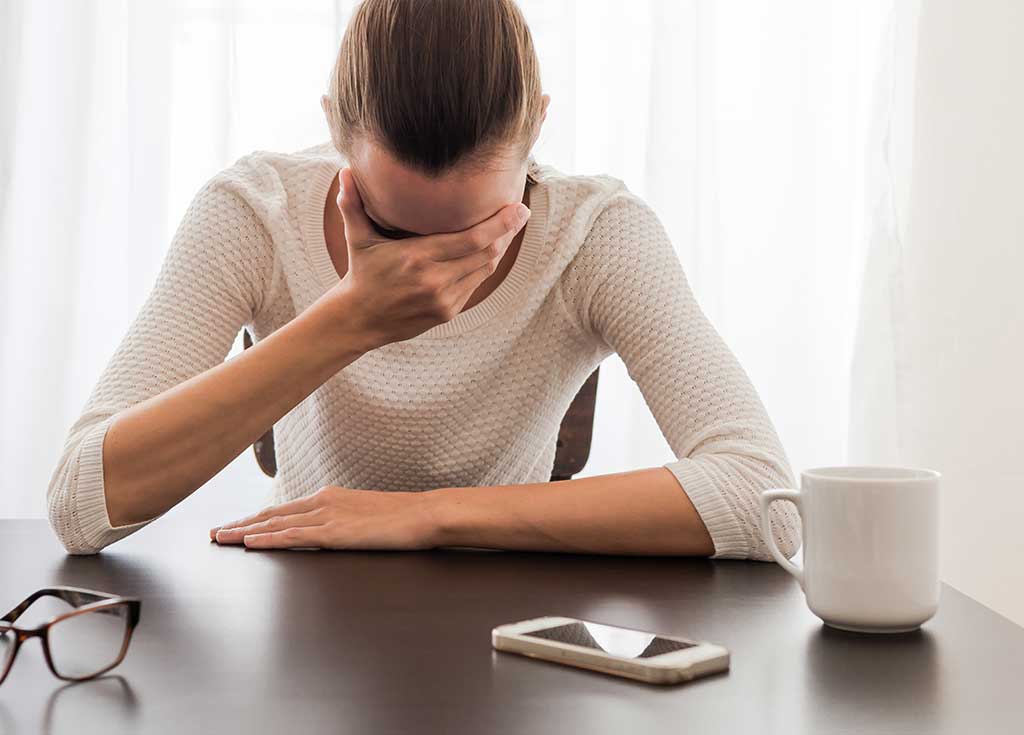
And I detail loads of case studies of people. Particularly I see a lot of women—late 30s, 40s—a lot of women come into my clinic. And actually, their diets are pretty good. And their movement patterns are actually pretty good. But their stress levels are through the roof. And when you address the stress, often the weight starts to come off.
I even had a lady with severe Crohn’s disease. And I know, Mike, you’re an expert in gut health. I had a lady with Crohn’s disease. And I hadn’t seen her in a little while. We did all the usual stuff. We changed her diet, put her on supplements. And she was improving. But she hit a plateau. And I hadn’t seen her for about 6 months. And she came in to see me. And essentially, I thought, like a lot of my patients, she was a very devoted wife. She was a devoted mother. But she had no time for herself. She was just running around 7 days a week for everybody else and doing nothing for herself.
And I thought, you know what? Her stress levels are probably the biggest lever to turn here at the moment. And I did a few things out of the relax pillar with her, including 15 minutes of me time each day. She just had to block off 15 minutes a day where she would unashamedly do something for herself. She had to not feel guilty about it. She had to do it by herself. And it could not involve her smartphone or technology.
And she had to find 1 thing a week that she could engage in that she’d always wanted to do that she loved. And so she’d always wanted to do salsa dancing and never managed to do it. So she joined a salsa dancing class. And, again, she came to see me 4 weeks later. And her gut symptoms had reduced by 50% just from those interventions. And, again, that taught me a lot, Michael, because I thought, wow, it’s amazing how powerful these simple interventions are.
And one thing I love about this approach is that each and every single one of us—in fact, ask every listener who’s listening at the moment to apply that 4-pillar framework in their own lives and go, “Out of food, movement, sleep, and relaxation, which pillar do you need the most work on?” because I think most of us intuitively know which one we’re struggling with. And I say pick something easy and start there because so many people always jump to food. And, again, look, I was guilty of this years ago. I thought food was the entry point for everyone. But you know what? When you listen to your patients, it ain’t for everyone. Yes, it is for a lot of people. But some people want to start somewhere else. So these 4 pillars, they all roll into each other. You can start wherever you want. They will all help you make the other pillars a lot easier.
And so I think relaxation is certainly the pillar I struggle with the most, if I’m honest, Michael. In fact, what pillar would you say you struggle the most with?
DrMR: Well, I agree. I think most people probably start with relaxation. And I think you’re saying something there which is really powerful, which is we tend to overemphasize food. And we have these different levers into our health. And we’re really jamming that one nutrition lever. And often times as people are doing that, literally at the expense of stress because they are making themselves more stressed out because they’re progressively going on to a harder and harder and more restrictive diet. And that is taking away from their relaxation. So I agree with you 100%.
I believe it was Nitsche who said, “That which you most need will be found where you least want to look.” And I agree.
DrRC: Yeah, I love that. Who did that quote? That’s brilliant.
DrMR: I believe that was Nitsche.
DrRC: Yeah. Fantastic, really, really great quote there. So I would say the relaxation whole side of things is really, really important. You know what? I get it. We’re all busy. We’ve all got busy lives. We’ve all got a million things that we need to be doing. And that’s where there are some really simple things, like 15 minutes of me time every day. It sounds easy, right? But it’s amazing how many people I see who don’t have that. That’s what they tell me, Mike. They say, “Hey, doc, you’ve given me permission to relax.”
DrMR: Yes! Yes. And sometimes people think that to take some me time means 4 hours a night. You don’t have to start with this huge chunk. You can break it down into a small little tidbit of 15 minutes. And whether that’s a walk or breathing or whatever, making the entry point accessible, I think is really important because just like you’re saying, it doesn’t have to be a huge commitment to self-time or avoiding your screen in order to get the ball rolling in helping someone feel better.
DrRC: Yeah. And I think one of the ways my approach has changed in the last few years is that I set the bar quite low with my patients now. For example, I’ve got a recommendation in the book called a daily practice of stillness which is where I really try and draw out this… Everyone is talking about meditation, mindfulness. And I love those things. But I say, “Guys, all we’re really talking about here is a daily practice of stillness.
And I have made deals with patients before to do 2 minutes meditation a day. I remember one patient in particular who said, “Oh, that’s too hard. I’ve tried it. I can’t do it. I’ve never got the time.” I said, “Hey, do you manage to brush your teeth 2 minutes in the morning, 2 minutes in the evening?” “Yeah, sure.” I said, “Do you ever forget?” He goes, “No, no, no.” “So why is that?” “I don’t know.
And I said, “The reason you don’t do that, you don’t forget, is because that’s been drilled in as a habit since you were a kid. That is just part of your daily routine. So why don’t we try 2 minutes of meditation? The only caveat is you’ve got to commit to 2 minutes a day. All right?” And he goes, “Okay, fine. Is that all?”
And I find when I do that, those 2 minutes, after a few days, the 2 minutes become 5 minutes. Those 5 minutes become ten minutes. The ten minutes might even become twenty minutes at some point. But if I start it off saying, “Hey, I want you to meditate for twenty minutes a day,” my success rate with myself but also my patients is pretty low actually.
DrMR: I 100% agree. And it’s funny you use that example of meditation because I have recently been trying to re-initiate my practice of meditation. And what I’m finding is just like you said, I had this meditation I use. It’s a guided meditation by Sam Harris. And it’s about 8.5 minutes. And I oftentimes notice—pretty much all the time—at the end of that 8 minutes, I’m saying, “Gosh, I’m going to go another 15.” And the recording ends. And I just kind of sit there and meditate in silence for another 5.
But it’s just that habit of getting over that hump of stopping your pattern of go, go, go, go, go, and giving yourself that few minutes of stillness. Once you get in that, your body tends to really like the way it feels. And then, like you said, the 2 minutes turns into 5. And the 5 turns into ten. But it’s just getting over that hump. And I think it’s a brilliant strategy, making that initial hurdle very early on.
View Dr. Ruscio’s Additional Resources
DrRC: Absolutely, Michael. One thing in the relax pillar, I’d love to mention, is the final chapter in the relax pillar. It’s about eating 1 meal per day around a table without any device.
DrMR: Love it.
Social Connection & Eating Mindfully
DrRC: And that came up for me being on the road, filming my BBC show. I did not realize if I’m honest, how many people, certainly around the UK—I imagine it would even be the same in the US or potentially even more of a problem in America—so few people of these families that I went to were sitting around a table eating a meal. It didn’t matter the socioeconomic status of the family. I would see it everywhere.
One family, I remember, the very first family I filmed with where the mother had type II diabetes, these guys, the very first night I said to them, “Hey, guys, what would you normally eat?” And it was really eye-opening. And the dad was walking out the door. And he said to the guys, “Just the usual, yeah?” And they said, “Yeah, yeah. Just the usual, please, dad.” That’s when he said, “Come on, doc. Come with me.”
So I went in the car with him. He drove fifteen minutes out of town to a fast food, to a McDonald’s drive-thru. He spent $48 pounds, about $65 he spent for the 4 of them at McDonald’s, which this was a few years back. They had multiple meals each. We drove back to the house.
And then what was really interesting was not only the food that they were eating—because they were doing that 4 or 5 times a week—but when they were eating, they weren’t sitting. They were all doing different things. Someone was eating standing up in the kitchen. The mom was watching a TV show and eating on the sofa. Her daughter was on the other edge of the sofa, eating whilst messaging her friends and being on Facebook. And I think the boy was sitting somewhere else in the house eating whilst doing some homework or something. But basically, the 4 of them were living together. They were a family. But they weren’t sitting around together.

And it was amazing. When I addressed this with them, they were a bit skeptical at first. I said, “Hey, guys. I get that you’re all busy. You’ve got different shifts. But when you are at home, maybe you could consider 1 meal a day where you just sit around and eat at a table with the TV off. You don’t have phones on the table.”
And I remember coming back about a week later, and these guys loved it. They were like, “We just can’t believe the difference. It’s absolutely amazing.” The guy said, “I feel much closer to my wife. We’re having a lot deeper conversations. But we’re actually learning about what happened each day, whereas before we’ve just been locked in our own minds doing our own things. The kids enjoy it. And we’ve started eating less because we’re actually eating a bit more mindfully now.”
And that was just one family. I did that with multiple families. And that’s really where this idea for the book came. It sounds like a really simple intervention. “Why is a doctor telling me about eating one meal per day around the table?” Well, the impact is profound. Yes, there’s some good research saying that you actually eat less when you do that. The power of community there, that social interaction, which is so important for health, that comes up when we do that.
There are just so many benefits. You really are switching off from your work, from social media. And we know a lot of people say, “You should have put in a fifth pillar on connection. I say, “Guys, the reason I didn’t put connection—because I nearly did—I felt that it’s very easy to complicate a health message.
And one thing I really wanted to do…And I absolutely believe the social connection is critical for our wellbeing. But I sort of covered that, Michael, under the relaxation pillar. And I discuss it, I think, a little bit in detail in this intervention of eat 1 meal per day around a table because I thought, do I make this 5 pillars? And then before you know it, it could be 6 pillars or 7 pillars. And it’s deceptively simple, I think. But I try to keep it simple for a reason. And I think that’s one of the reasons it’s been such a big success is that I think people like the simplicity of this approach.
And not only is it resonating with the public, but I am delighted with how many medical doctors, medical students, health coaches, nutritional therapists are using this now as they go to book with their patients and their clients because they’re saying, “We can go through this in our consultation. And your book is a really practical how-to guide that these guys can use as a resource when they’re at home trying to put this into real life.”
So I’ve really tried to keep the message simple. But it was hard because initially, I wanted to complicate it. I wanted to put in all the science and all the research. And I thought, I want medical doctors to like this book as I was writing it. Then as I was writing it, I thought, Rangan, why are you writing this book? Are you writing it to show off how much you know? Or are you writing this to really help as many people as possible?
And I thought, I’m writing this to help as many people as possible. So therefore, I need to make the science clear. But I need to make the recommendation really simple and accessible. And I’m really proud, Michael, that your listeners, I imagine, may subscribe to a certain dietary tribe. I’m not sure.
DrMR: No, I think we’re pretty dietarily agnostic where we see the landscape of various diets having merit for different people. And we’re pretty open.
DrRC: Yeah. And that’s what I really like about your approach, actually. And I think it’s quite consistent with mine, which is every suggestion I’ve made in my book works. If you are a diehard vegan, this will work for you. And why I say that is because I feel very passionately there’s a lot of fighting on social media. There’s a lot of quite polarized opinions. And I understand that. And I understand where that passion comes from.

But what I see when I talk to real patients who observe this is they get really confused. They don’t know what to do. They’re like, “Is paleo wrong? Should I be vegan now? That guy said I need meat.” I want to be a doctor who helps every single patient who walks through my door. And the grouse here is that, yes, I’ve got my own personal preference, I guess, in terms of what I do for myself. But I have seen patients who thrive on paleo. And I’ve got some patients who are thriving on a very well-constructed vegan diet.
And therefore, as adults, I think, well, I need to give them the best advice I possibly can. But I also need to respect their own beliefs and their preferences and how they’ve been brought up and culturally what they would like to do. That is as important to me. And that’s why I’ve tried to become diet agnostic to a certain degree because I think actually a lot of what are seemingly quite different diets actually have about 80% the same.
DrMR: I agree. And we squabble over the 20%. I’ve actually made that critique on the podcast before. It’s funny you say that. Yeah, absolutely.
DrRC: Oh, brilliant! Yeah, exactly. And I kind of feel I really want to focus on the things they all agree on and go, “Hey, look, if we got the whole population to be doing this 80% right, I think we’d have a much healthier and happier population.”
DrMR: 100% agreed. And especially if we can get people taking some time for stillness, taking some time off their devices. And I cover some of this research in my book about the increased scores of anxiety and the decreased scores of empathy that one arrives at when they’re on their device. So you can become less anxious and more kind if you spent less time on your phone, and potentially less confused because then you would be reading fewer blogs about what you should think about diet, and hopefully in that still time, listening to your body and finding the truth in the signal that your body is throwing you regarding how you respond to a given diet. So, yeah, there’s a lot of benefit here in these fundamentals.
Is there anything else that you want to leave people with? We just scratched the surface of relax. But I do think that’s definitely, in my opinion, for most people, going to be the most important pillar. But anything else that you want to touch on before we wrap up?
Time Restricted Eating
DrRC: No. There are 3 other pillars. And they’re full of simple, practical suggestions. So they pretty much work for everyone. I guess in food, one thing I’m really big on these days is I love Dr. Satchidananda Panda’s research in the Salk Institute on time-restricted eating. And I think it’s really, really interesting. I think it could be really game-changing for a lot of people. And I sort of summarize his research simply in the book.
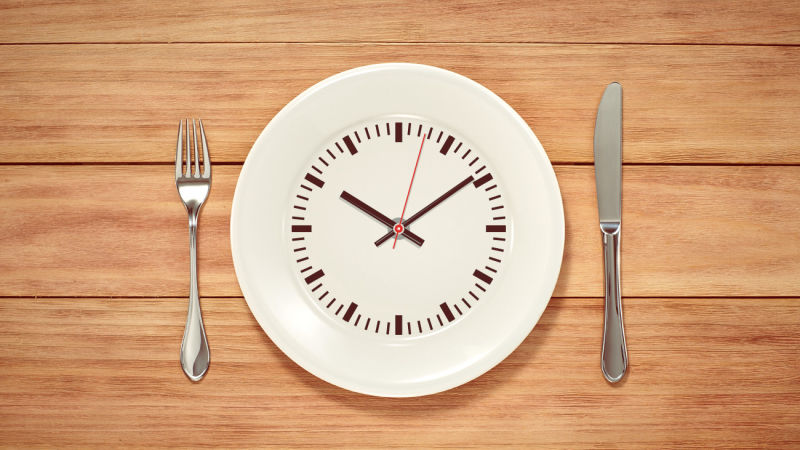
And I’m a huge fan of if people have struggled with what they are eating, maybe they can try changing when they eat. I love this whole eating your food within a twelve-hour window because I think there are multiple benefits now with seeing that if you eat all the food you’re going to eat within twelve hours, it can improve your blood sugar balance. It can improve your immune system function. It can even help you lose weight, and a whole host of other things.
And people often say, “Well, twelve hours, sure. But can I get more aggressive?” And I say, “Yeah, of course you can.” Some people do really well with ten hours or 8 hours. For me, personally, I’m trying to promote a holistic, 360-degree approach to health. My whole approach here is if you’re doing twelve hours, give yourself a tick and move on to something else.
Rather than trying to max out that one intervention and go, “Well, twelve hours is great. Let me do ten hours. Let me do 8 hours. Let me see if I can actually just eat all my food within 6 hours,” I’m keen to say some people benefit from doing that. But most of my patients are eating the first time food enters their mouth and the last time they eat goes beyond twelve hours.
So I say, “Guys, pretty much all of you can just wind it back to twelve hours, whether it’s 7 am to 7 pm or 8 am to 8 pm. Even doing that, I’ve seen have a huge difference with people. And I think it’s just a nice way of taking the pressure of people, saying, “Look, okay, fine. You’re finding it hard to change what you eat. Why don’t we just concentrate on changing when you eat first?” So I kind of like that one.
5 Minute Kitchen Workout
And then one of the big ones, one of the ones that people talk about a lot on social media is my 5-minute kitchen, which is I go into how about the age of thirty, we start to lose muscle mass each year and how our lean muscle mass is one of the strongest predictors we are going to be as we age.
And I remember a few years ago that I was seeing this research and I was telling a patient of mine, “Strength training is really important. You should really try and get to the gym.” And he said, “Well, how many times?” And we agreed on 3 times a week for about thirty to forty minutes. And he came back about 4, 5 weeks later. I said, “How are you getting on?” He said, “Hey, doc, I really wanted to. But I just didn’t have time. I couldn’t get there. Work is pretty full on at the moment.”
And in that moment I thought, “You know what? I’ve got to do a better job. I need to get better at files. I never thought why is he not doing what I’ve asked him to do. I thought, I need to give him advice that’s more relevant and more practical for him that he feels he can do in the context of his life.
And in that moment, I came up with this 5-minute kitchen workout. I literally took my jacket off. I hit the deck. And I started teaching him 5 simple moves. And I said, “Hey, can you do this?” And he goes, “Well, I think so. Yeah. That’s pretty straightforward.” I said, “All I want for you is 5 minutes twice a week in your kitchen when the spinach is just steaming or you’re waiting for something. Just knock it out in like 5 minutes.” And he said, “All right, doc. I’ll give it a go.”
And he came back a few weeks later. He loved it. It started off at 5 minutes twice a week. And suddenly it became a habit that he would do ten minutes every evening in the kitchen while he was cooking his food. He would just double up that workout. And I have 20-year-old patients doing it. I’ve got 85-year-old patients doing it.
Just last week, Michael, I got this couple. The lady is 83. The husband is 85. And, again, they’re doing my 5-minute kitchen workout because the great thing about it is that you can modify it for any age group, for any mobility levels. And you don’t need to buy any equipment. You don’t need a gym membership. You don’t need to buy any equipment. You don’t even need to change your clothes.
And so it’s my attempt to prioritize strength training and say, “Guys, look, I want to remove every single obstacle or every barrier to entry that I can and give you something that you can start doing.” And I found it life changing for people. And I know some people got in touch with me on Instagram and said, “Hey, Dr. Chatterjee, I’ve never worked out before. But I love that I can do that. It’s simple. And it’s practical.”
And really, Michael, that’s really what my whole approach is about. That’s what the whole book is about. It’s about breaking down health into simple, actionable steps that people feel inspired to make that change.
DrMR: Yep. I think it’s a great approach, just trying to give people something to do that doesn’t feel overwhelming. And that’s part of the reason why I do not provide these very highly-rigorous dietary recommendations because I found that compliance is very poor if we said, “Well, we’re going to do a trial gluten-free. You can’t have any gluten for the next 30 days” because as soon as someone fails, they go, “Well, screw it. I’m not going to even bother anymore.”
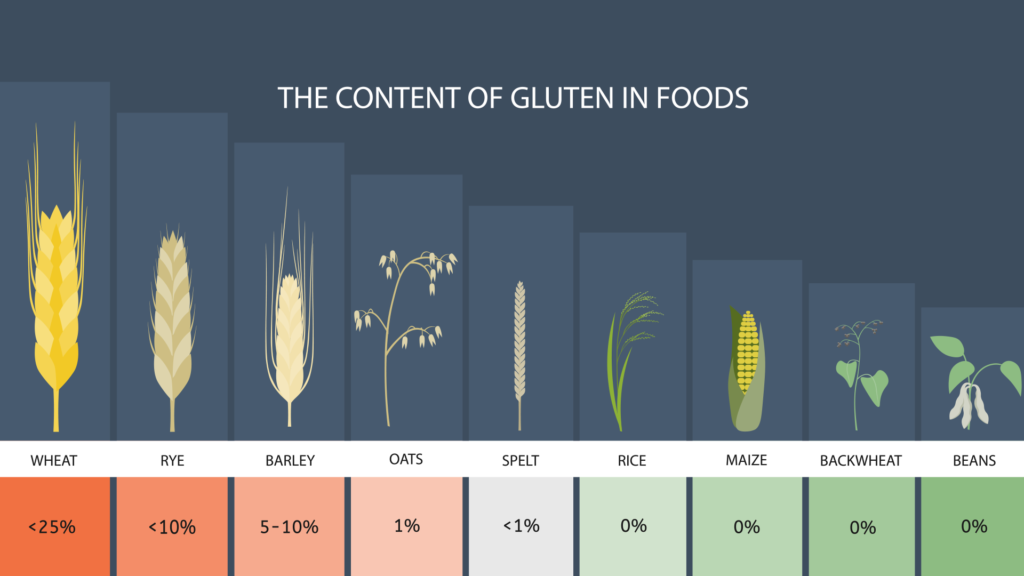
So they get 6 to 8 days in. They have a little bite of gluten. And then they just jump ship, whereas we can say, “You know what? Let’s just try to have you cut out the bread, the 4 slices of bread you’re having every day. And let’s just start there. If you get a little gluten in your sauce or if you’re at the coffee shop and you snack on something, not a big deal. Let’s start with the 80% of low-hanging fruit here.”
So you’re absolutely right. The approach of giving people obtainable recommendations is fantastic. And I love that. I love it. I love the approach here. And I’m hoping for the audience, if you’re in need of a re-analysis of your lifestyle pillars and dietary pillars, you’ll grab a copy of this book because I really do like the way that it’s laid out with just some simple things that you can do that are very easy.
And I can see even someone who’s struggling with trying to recover their gut health could implement some of these things and not feel daunted. So I really do appreciate the approach and the way that you’ve laid this out.
Episode Wrap Up
DrRC: Well, thank you, Michael.
DrMR: Cool. So can you tell people, is there a certain website you’d like to direct people to? And please tell people again the name of the book/books, depending on where you’re shopping. I believe there’s one title in the US and a different title in the UK for the book.
DrRC: Yes, sure, Michael. So my first book, it’s called The 4-Pillar Plan in the UK and Australia and New Zealand. In most of the world, it’s called The 4-Pillar Plan. But in the USA and Canada, it is being released with a different title called How to Make Disease Disappear. It’s the same book. It’s just a matter of what territory you’re in. If you want to pick it up, if something grabs your attention, you can find How to Make Disease Disappear.
And my website is DrChatterjee.com. And I’m on all the social media channels, Instagram and Facebook as DrChatterjee. And Twitter is DrChatterjeeUK. So, yeah, if you have any questions or you want to just follow what I’m doing, or actually ask me any questions about this podcast or anything in particular, feel free to hit me up on social media.
DrMR: Awesome. Well, thank you, my friend. Keep fighting the good fight. I really appreciate the good work that you’re doing. And keep me in the loop if anything new and exciting pops up on your end.
DrRC: Will do, Michael. Thanks for having me.
Dr. Michael Ruscio is a DC, natural health provider, researcher, and clinician. He serves as an Adjunct Professor at the University of Bridgeport and has published numerous papers in scientific journals as well as the book Healthy Gut, Healthy You. He also founded the Ruscio Institute of Functional Health, where he helps patients with a wide range of GI conditions and serves as the Head of Research.


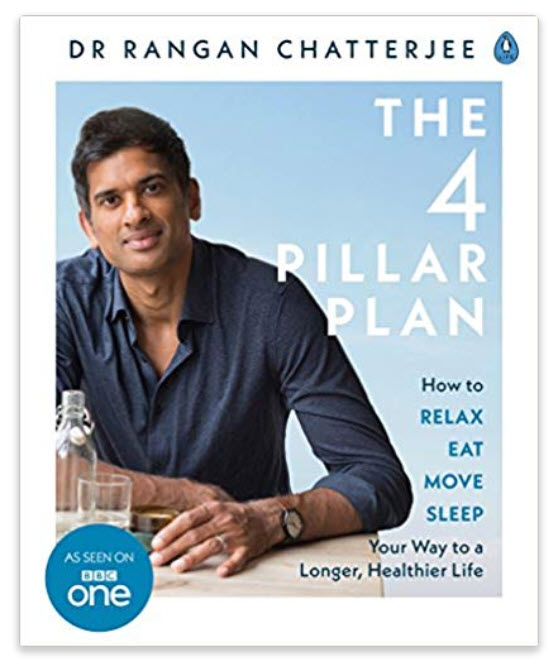

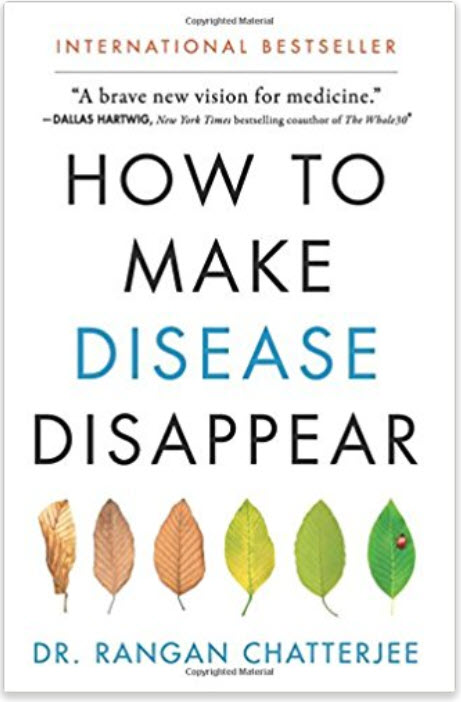
Discussion
I care about answering your questions and sharing my knowledge with you. Leave a comment or connect with me on social media asking any health question you may have and I just might incorporate it into our next listener questions podcast episode just for you!